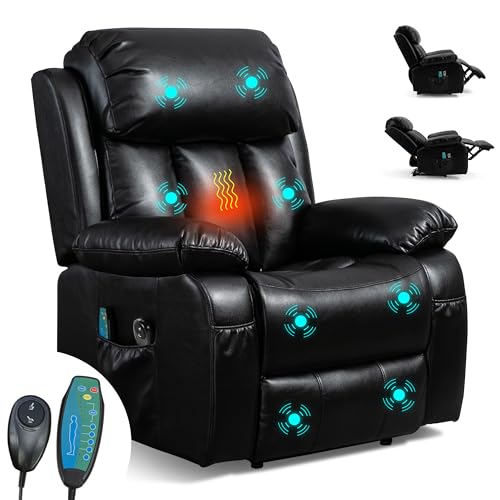The Evolution of Modern Recliners: Comfort and Design in the 21st Century
Modern recliners have actually transcended their standard function as simple, adjustable seating choices. Once limited to Recliner Chair Deals of function, these chairs have progressed into sophisticated pieces of furniture that combine ergonomic style, style, and innovative technology. Today's recliners are not simply furniture; they are an integral part of the home environment, enhancing relaxation, entertainment, and overall wellness. This article will delve into the evolution of modern recliners, explore numerous types and functions, and address some often asked concerns.
A Brief History of Recliners
The story of recliners started in the late 19th century when they initially emerged as a development in furniture style. Originally termed "lazy boys," these chairs were designed for comfort and relaxation. Throughout the years, their product structure, ergonomic styles, and performances have dramatically altered, causing the modern recliner we see today.
Development Through Time
The improvement in technology over the years has actually played an important role in the advancement of modern recliners. Early recliners included basic reclining systems, primarily depending on mechanical levers. In contrast, today's models incorporate numerous technological developments, consisting of electric motors and adjustable functions that allow users to personalize their seating experience.
Secret Milestones
| Year | Turning point |
|---|---|
| 1928 | Introduction of the very first reclining chair |
| 1950s | Mass production and marketing of recliners |
| 1980s | Incorporation of swivel and glider systems |
| 2000s | Rise of ergonomic styles and memory foam |
| 2010s | Integration of clever technology and USB ports |
The Anatomy of a Modern Recliner
Modern recliners come packed with a range of functions created to improve user comfort. Understanding these features can assist consumers make educated options when picking a recliner.
Secret Features to Consider
Reclining Mechanism
- Manual recline: Operated with a lever or a lock.
- Power recline: Uses a motor for simple and easy reclining, frequently with numerous positions.
Product Options
- Leather: Offers a traditional, elegant feel.
- Fabric: Available in various colors and textures, appropriate for family usage.
- Synthetic leather: A more budget-friendly and animal-friendly alternative to genuine leather.
Ergonomics
- Back support: Critical for back health, adjustable options readily available.
- Head and neck assistance: High-back styles and built-in headrests.
- Ottoman compatibility: Many modern recliners include integrated footrests or matching ottomans.
Technological Additions
- USB charging ports: Convenient connectivity for devices.
- Massage features: Varying intensity levels for relaxation.
- Heating functions: Helps soothe hurting muscles.
Design Styles
- Contemporary: Sleek, minimalist designs appropriate for modern homes.
- Conventional: Classic styling and deep cushions for a cozy feel.
- Environmentally friendly choices: Made from sustainable materials.
Kinds Of Modern Recliners
In the varied world of modern recliners, various designs accommodate different needs and tastes. Here's a rundown of the most popular recliner types today:
Popular Recliner Types
Wall-Hugger Recliners
- Need minimal space, appropriate for smaller sized homes.
Lift Recliners
- Geared up with a lifting mechanism that carefully assists users in standing up.
Rocker Recliners
- Integrate the reclining and rocking functions, suitable for relaxation.
** reclining Sectionals **
- A sectional sofa that permits several people to recline all at once.
Home Theater Recliners
- Created for cinema-like experiences, frequently featuring cup holders and reclining seats.
The Best Places to Use Modern Recliners
Modern recliners can boost numerous living areas in a home. Here are some ideal locations:
- Living Room: The main gathering area for relaxation and entertainment.
- Home Theater: Upgrades the movie-watching experience with convenience and design.
- Bed room: Serves as a comfortable area for reading or unwinding before sleep.
- Home Office: Offers a peaceful break area throughout long work hours.
Regularly Asked Questions (FAQs)
What is the typical lifespan of a recliner?
The lifespan of a recliner can vary significantly based on its building and usage. Nevertheless, a high-quality recliner can last anywhere from 7 to 15 years with correct care.
How typically should I clean my recliner?
It's recommended to clean your recliner at least when a month. Use a microfiber fabric for fabric recliners and a soft leather cleaner for leather chairs to preserve their appearance and health.
Are power recliners more costly than manual recliners?
Typically, yes. Power recliners utilize advanced technology that often comes at a greater cost point compared to manual recliners.
Can recliners be repaired if they break?
Yes, lots of recliners can be repaired. Issues such as broken systems or damaged upholstery can generally be solved through professional repairs, depending upon the intensity.
What should I search for when buying a recliner?
Think about factors such as the reclining mechanism, material, ergonomic functions, size, design, and any additional technology that fits your lifestyle and home decoration.
The modern recliner has actually come a long way from its modest origins. Today's recliners are not simply practical pieces of furniture however are designed to enhance the total lifestyle for their users. As technology continues to advance and customer preferences develop, we can anticipate to see a lot more innovation in the world of recliners. Whether looking for a stylish centerpiece for a living space or a relaxing spot for relaxation, today's recliners use something for everybody. With a wide variety of alternatives offered, choosing a recliner has never been simpler or more interesting.

